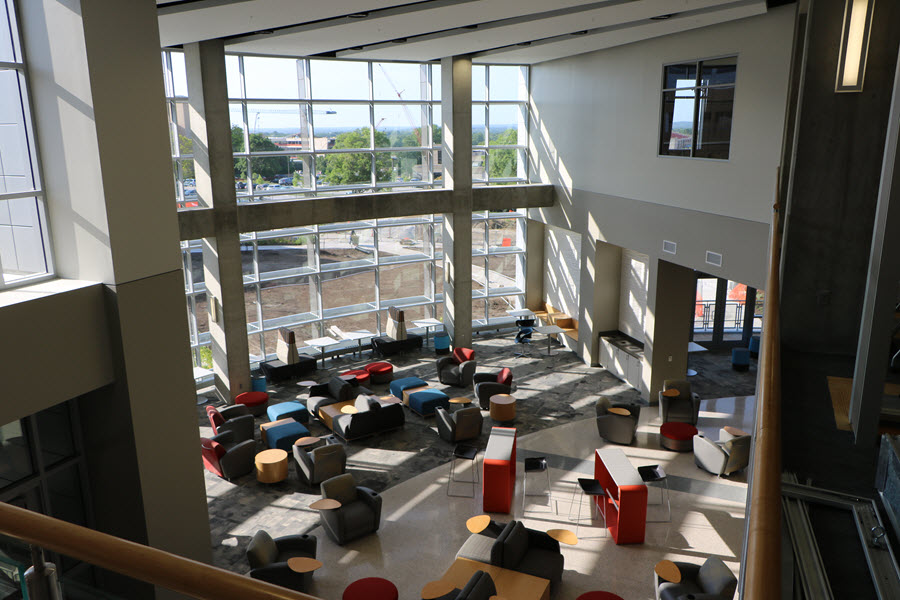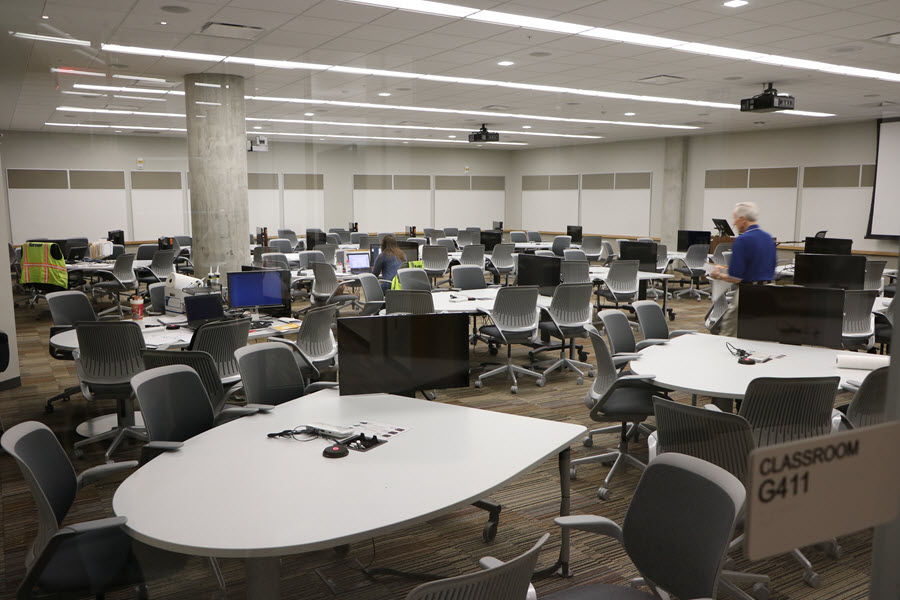By Doug Ward
The School of Engineering at KU will open several new active learning classrooms this fall.
I’ve been involved in planning some of the summer training sessions for the rooms, so I’ve had a chance to explore them and see how they will work.
I’ve written before about the ways that room design can transform learning. Well-designed rooms reduce or eliminate the anonymity of a lecture hall. They promote discussions and learning by creating a sense of community. They make collaboration and sharing easy, and they allow instructors to move among students rather than just stand at the front and talk at them.
The new engineering rooms provide all of that. The 360-degree panorama above shows the largest of the rooms, which will hold 160 students. (Use the controls on the image to move around the room, or just press the “Ctrl” key on your computer and use the cursor to move around.) The new building also has a 120-seat classroom, a 90-seat classroom, and three 60-seat classrooms. You’ll find images of two of the smaller rooms below.
All the classrooms contain a key factor in active learning: tables that allow students to work in groups and that effectively shrink the room size. The tables in all of the rooms have wired connections so that individual students can project to their group or classroom screens with laptops, tablets or smartphones. They also have miniature Elmo document cameras.
The smaller classrooms have monitors at the ends of the tables; the 160-seat classroom has large-screen monitors on the walls, one for each table. The lecterns in all the rooms have large Wacom touch-screen tablets that will allow faculty members to draw on the screen, and most of the wall space consists of whiteboards.
Even the common spaces in the new building provide opportunities for learning. For instance, the atrium (see below) provides a marvelous gathering space for individual study but also for conversations that often lead to informal learning.
The creation of these rooms is a huge step forward in active learning. Six other classrooms in two other buildings will also open this fall. They won’t be as fancy as these rooms, but they reflect the reality that learning is changing and that learning spaces need to change, too.
Doug Ward is the associate director of the Center for Teaching Excellence and an associate professor of journalism. You can follow him on Twitter @kuediting.


Recent Comments